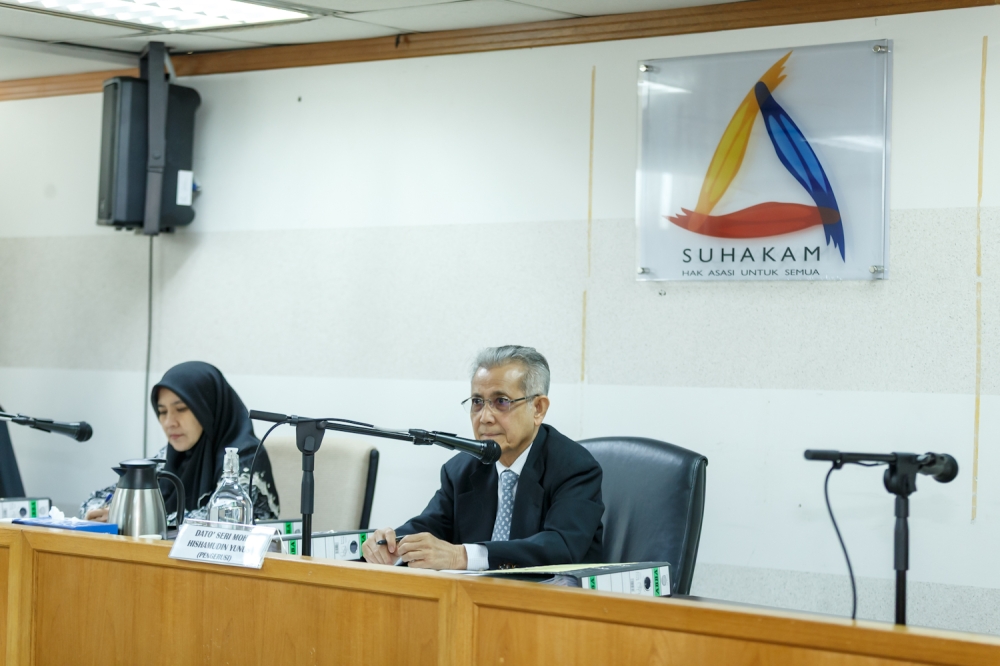KUALA LUMPUR, Sept 2 — The death of a Taiping prison inmate was caused by seven blunt force injuries that ruptured internal organs and led to fatal bleeding in the abdomen, a forensic pathologist told the Human Rights Commission of Malaysia (Suhakam) today.
Dr Tan Lii Jye of Hospital Raja Permaisuri Bainun, who conducted the post-mortem, testified that the injuries were concentrated on the man’s back and were not the result of CPR.
He said the deceased, Gan Chin Eng, 62, had lost about 1.4 litres of blood before succumbing to his injuries, leaving him with only a brief window of survival.
“The main cause of death was abdominal injury due to blunt trauma, that was the number one cause. The contributing factors were arterial blockage but it was not significant enough compared to the haemorrhage,” Dr Tan said today during the Suhakam inquiry into the alleged violation of human rights at Taiping prison.
On January 17, 2025 an incident occurred at Taiping Prison involving alleged brutality by wardens. Over 100 inmates, including Gan, were reportedly assaulted using batons and tear gas.
Gan was in poor condition at one point and was taken to Taiping Hospital, where he was later pronounced dead. Dr Tan said he could not determine whether swift action would have saved Gan’s life, even though the hospital was only five minutes from the prison.
He also said that Gan was probably not moving or standing when the injuries occurred.
“These were blunt force injuries. The impact was from outside and transmitted to the internal organs. There are broken ribs which lead to a ruptured liver which causes internal bleeding.
“All seven injuries we found were from the back and those injuries were consistent with inflicted injuries. It is blunt force trauma and not from a fall. Although a fall could cause these injuries, it’s unlikely as there are seven locations where there was impact on the body.
“Seven injuries are inconsistent with self-inflicted injuries or falls,” he clarified.
He also told the inquiry that the force of the blow damaged the adrenal glands and lungs through impact transmitted from the ribs, further supporting the conclusion that the injuries came from heavy external force.
Dr Tan added that the distribution of injuries suggested the man had been attacked from behind while unable to move away.
“When the body has nowhere to go such as lying on the floor or against the wall, the force is fully absorbed. It’s unlike standing up where the force can be transferred,” he said, alluding that Gan was probably on the ground when he was allegedly attacked.
He explained that the pattern of injuries suggested Gan may have been struck while lying against a surface, such as the floor or wall which prevented his body from absorbing the impact.
There were claims that over 60 prison wardens had assaulted more than 100 prisoners in Taiping prison earlier this year.
The families of the victims had lodged reports, claiming that they were barred from visiting the detainees, with the prison giving the excuse that the inmates were undergoing quarantine.
The prisons department, for its part, confirmed that a “provocation” had occurred involving a number of inmates being transferred from the Batu Gajah correctional facility to the Taiping prison.
On January 27, federal police said they would be investigating the matter. Suhakam launched an investigation of its own the following month.
The inquiry is chaired by Suhakam chairman Datuk Seri Mohd Hishamudin Md Yunus and commissioner Dr Farah Nini Dusuki.






